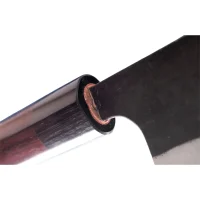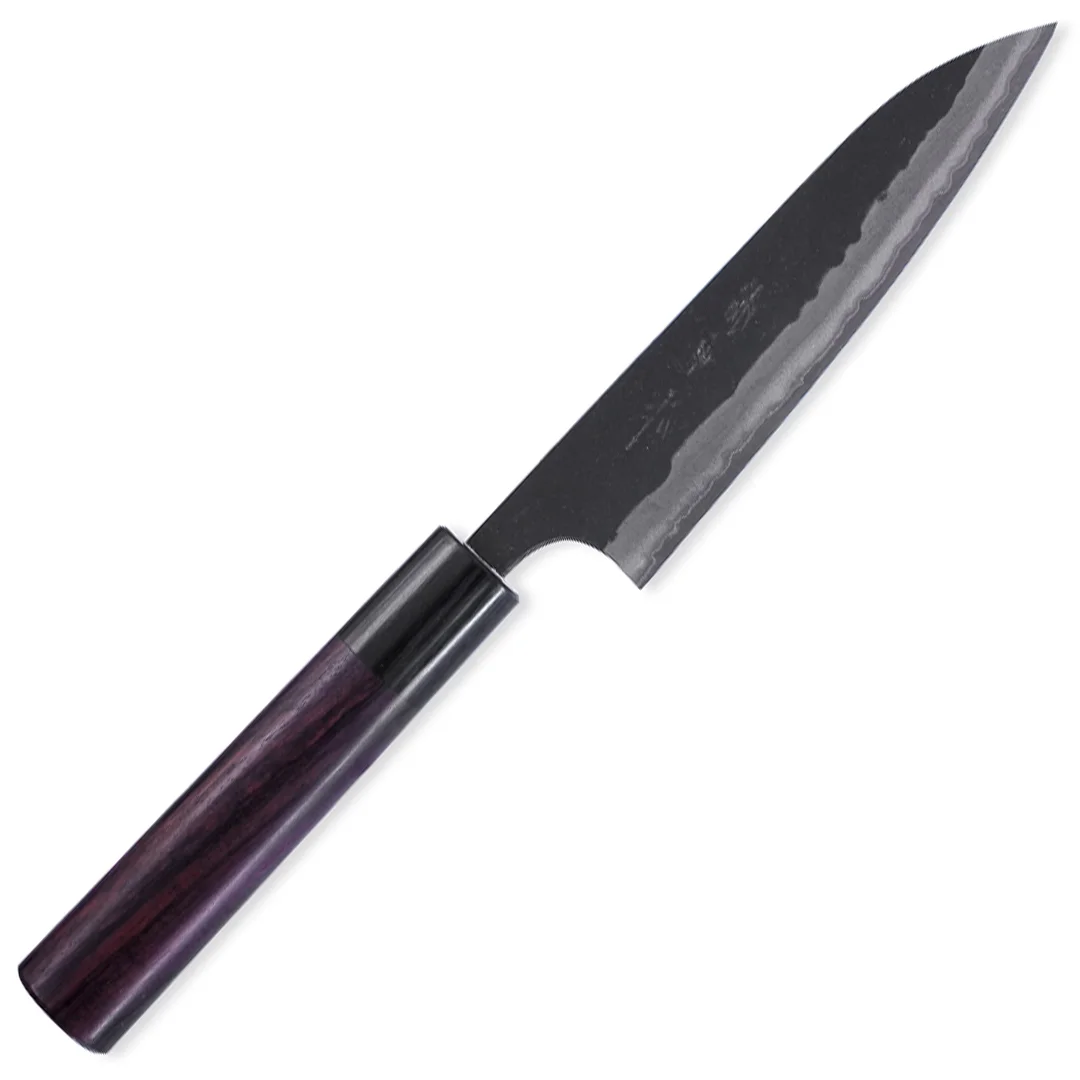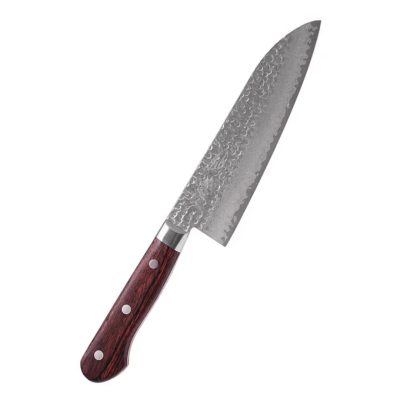The highest quality of traditional Japanese steel is called Aogami (Blue Steel). The highest grade of Aogami is Super Aogami. Blue steel uses Iron sand as the source of Iron rather than Hematite, which has higher levels of impurity. The resulting steel with over 1.5% Carbon, with masterful forging, holds a supreme enduring edge whilst still easy to grind and hone.
Miki City has been at the centre of sword making for over 7 centuries and many of the original forges are now producing some of the finest examples of kitchen knives to hail from Japan. The Oka forge is one such workshop and normally only work with tradition High Carbon steels that hold a sharper more enduring edge.
We present here a collection of Super Aogami knives that are hand forged using 3 Layer steel. As many of our more modern clients prefer a stainless knife, we requested that these knives were crafted with a High Carbon central core of Aogami Super clad in soft stainless (for easy sharpening)and surfaced with black oxide -normally only done on iron steel to reduce rusting – for a traditional look. The Tsuchime finish also prevents a vacuum forming when cutting ‘sticky’ produce thus facilitating effortless smooth cutting.
Handle: Red Sandalwood with black plywood bolster.
GYUTO (Gyu – cow & To – sword):
This is the Japanese interpretation of a Western Chef’s knife. It is flat from the handle end for about 1/3rd of the edge and then curves to the tip. It is ideal for the Western style of roll cutting.
Function – Multipurpose chef knife. For Slicing, Dicing, Mincing, Filleting and Chopping of meat, fish and vegetables.
Normal length – 180mm to 300mm.
Tip: With the edge flat for about 1/3rd of the blade – 210 mm or longer the knife-edge profile is the same as a 180mm Santoku from the handle to tip and the same as a 180mm Gyuto from the tip to handle – so essentially a 180mm Gyuto & 180mm Santoku in one knife. The 210mm is the most favoured size for most chefs.
PLEASE NOTE: THE CORE MATERIAL IS VERY HIGH CARBON SO THE VERY NARROW EXPOSED EDGE BELOW THE HAGANE LINE WILL OXIDISE WHICH CAN BE REDUCED AND REMOVED WITH THE USE OF RUST REMOVING CREAM AND CAMELIA OIL WHICH ARE AVAILABLE IN OUR MAINTENANCE SECTION.








































Reviews
There are no reviews yet.